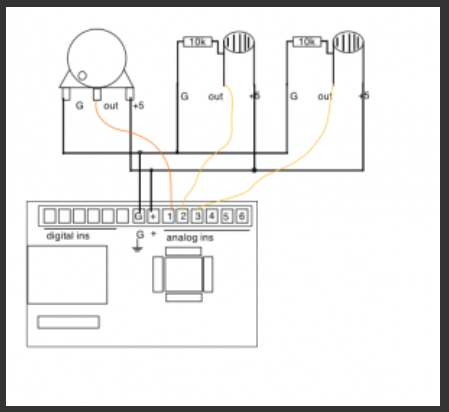Hey community,
first of all: please have mercy with me, since I am completely new to this technical world of music 
And unfortunately I couldn't find an appropriate answer in forum...
How do I technically solder multiple potentiometers to the board?
I am not talking about "how to hold a soldering bolt", but in the sense of how to use one VDD(A) multiple times. There are much more inputs (PA1-C5, etc.) than there are grounds and vdd(a)s. So how can I apply multiple pots correctly? Is there some sort of bridge or cable multiplier that I could use?
If possible give me an exact example like:
Listen you dumbxss... Solder the minus to the ground, the plus to the VDDA and the middle to PA1. 
You know, where I am going with this 
And is it technically okay to use one VDD(A) multiple times or could this overload the current supply?
Please help,
Greetings
Marvin

